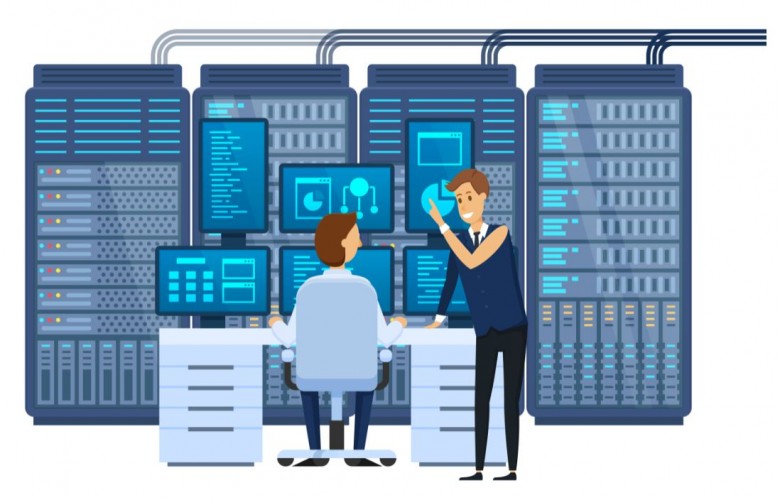What is the Best Quality in an IT Support Engineer?
Survey Says: Ability to Follow Processes
Let’s face it, you can have the most talented engineer in the world, but if he doesn’t follow processes, he is a liability to your organization. Consequently, processes help the entire staff with everyday routines without making them stop and think of every mundane task each step of the way. Most importantly, processes allow the engineer to free up their mind and concentrate on the task at hand by providing a program for repeated activities.
Consistency is Key to Quality Service Delivery
Processes are the only way to create consistency of service. Yet, for the processes to work, they must be specific to the service delivery and adhered to by the engineers. When either of these fails, you receive poor service. However, a mature IT organization invests time and tools to ensure the processes help with continuous improvement and premium service.
Processes Create Efficiencies
Processes create efficiencies, and great service companies are efficiency experts. Processes are the cornerstone for efficient and excellent service. Subsequently, a successful business process will cut across the whole organization – not just the individual department. Even sales, accounting, and HR need to be part of the solution. A good example of a failed process is when a salesperson tells the client one thing and the delivery is much different.
Learn from My Experiences
I learned first-hand the importance of the following process very early in my IT support sales career. For example, I had a client once who understood our escalation policy very well. Why? Because this was one of my selling points. First, I would share that the engineer had 15 minutes to define the problem and map out a solution. Second, if they could not do this, they were required to escalate the issue to a more senior engineer. Of course, the original engineer would still own the ticket, but the second engineer would fix the problem as they watched. This served three purposes:
- The client didn’t have to re-explain the ticket over and over again as it changed hands from one engineer to another.
- It sped up time to resolution for the client.
- The engineer increased his/her knowledge base.
That sounds great, right? It was – right up to the point that the engineer did not follow the process.
Fact: Engineers Hate Asking for Directions
Let’s face it, engineers are notorious for wanting to solve problems on their own – no matter how long it takes. So, when Mike was at the client site for four hours without a plan of action for a single desktop issue, I heard about it from the client. Mike didn’t realize it was not about him. Because of his unwillingness to let go of the issue, an important executive was without the use of her computer for four hours!
Engineers Who Do Not Follow Processes Cost the Company Money
You will often hear me say that billable time is king in the IT support industry. In this case, there appeared to be no end in sight as Mike tinkered around for a solution. As a result, our company was losing money. After all, Mike could have resolved multiple issues for our clients during the time he took to solve this one issue. Therefore, the cost of that one ticket to us was the engineering salary + the potential billable time = $580 loss. Unfortunately, I have no idea what the financial impact was on the client.
How Do You Know if Your IT Support Company is Following Defined Processes?
The following are strong indications your IT Support Company is weak on process follow-through.
- Repeat questions
- Engineers learning on your time
- Repeat issues
- Long resolution times
- Long response times
- Bad communication
- Poor management
- Competing priorities with your own Internal IT Department
- Poor Engineering Attitudes
INSI Values Processes
At INSI, we know that processes form the framework to improve operational efficiencies and deliver premier service. Below are a few examples of some of our process and the benefits to our clients:
- Always Do What is Best for the Client – Nothing is more important than this.
- Assign the Ticket to the Correct Engineer – We have a tiered structure that forces tickets to be assigned to the correct skill level.
- One Engineer Owns the Ticket – It is important for one person to own the ticket and involve others to help him/her as needed. This will speed up the time to resolution for you.
- Escalation Process – Our escalation process has a mentoring aspect to it which speeds up your resolution and helps our engineer expand his/her knowledge base.
- Quarterly Preventive Maintenance – A process that allows us to catch issues before they become a real problem for you.
- Monitoring Response – Alarm response protocols are defined at the kickoff meeting and strictly followed.
- On-boarding New Clients – Documentation, asset tagging, client handbook, introductions, etc.
- Time-Slip Lag – Our engineers document the problem and resolution while it is still fresh in their minds. As a result, engineers can access the knowledge base for solutions if/when they come across the same issue again.
- On-Going Documentation – Fresh documentation helps us make informed decisions and recommendations to your company.
In conclusion, processes make the difference between a successful client relationship and a failed one. If you are having inconsistent service, this may be the culprit and it is time to contact INSI!
Do You Want To Learn More About IT Processes?
If you would like to know more about this topic and how it affects you, visit Amazon or Barnes & Noble for a copy of the book IT Outsourcing Secrets – A Small Business Guide to Comparing IT Support Companies.





